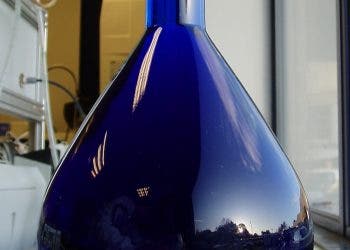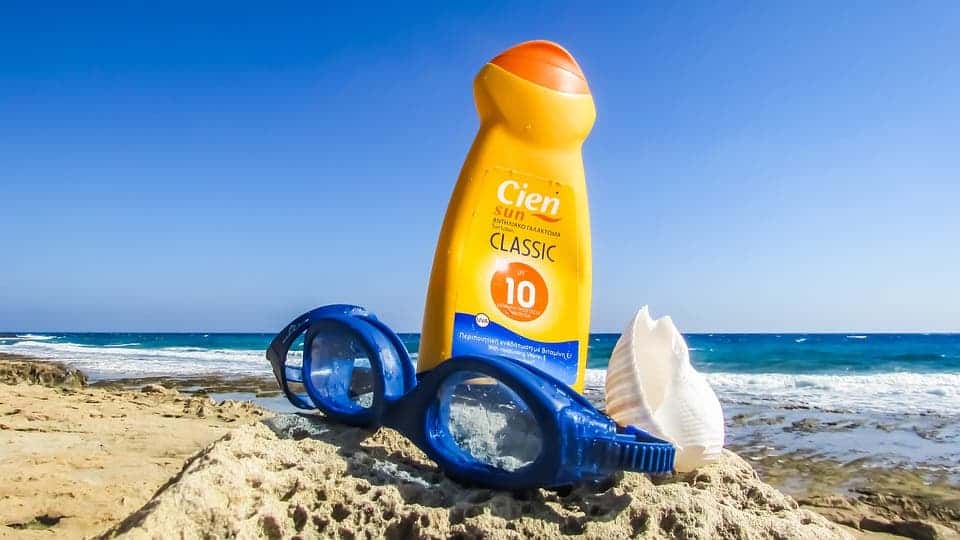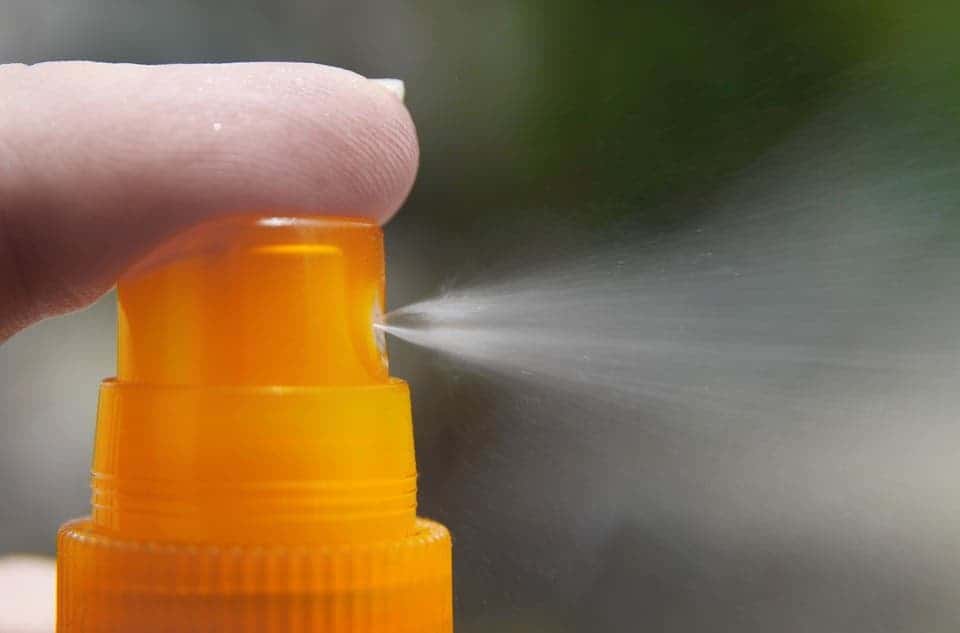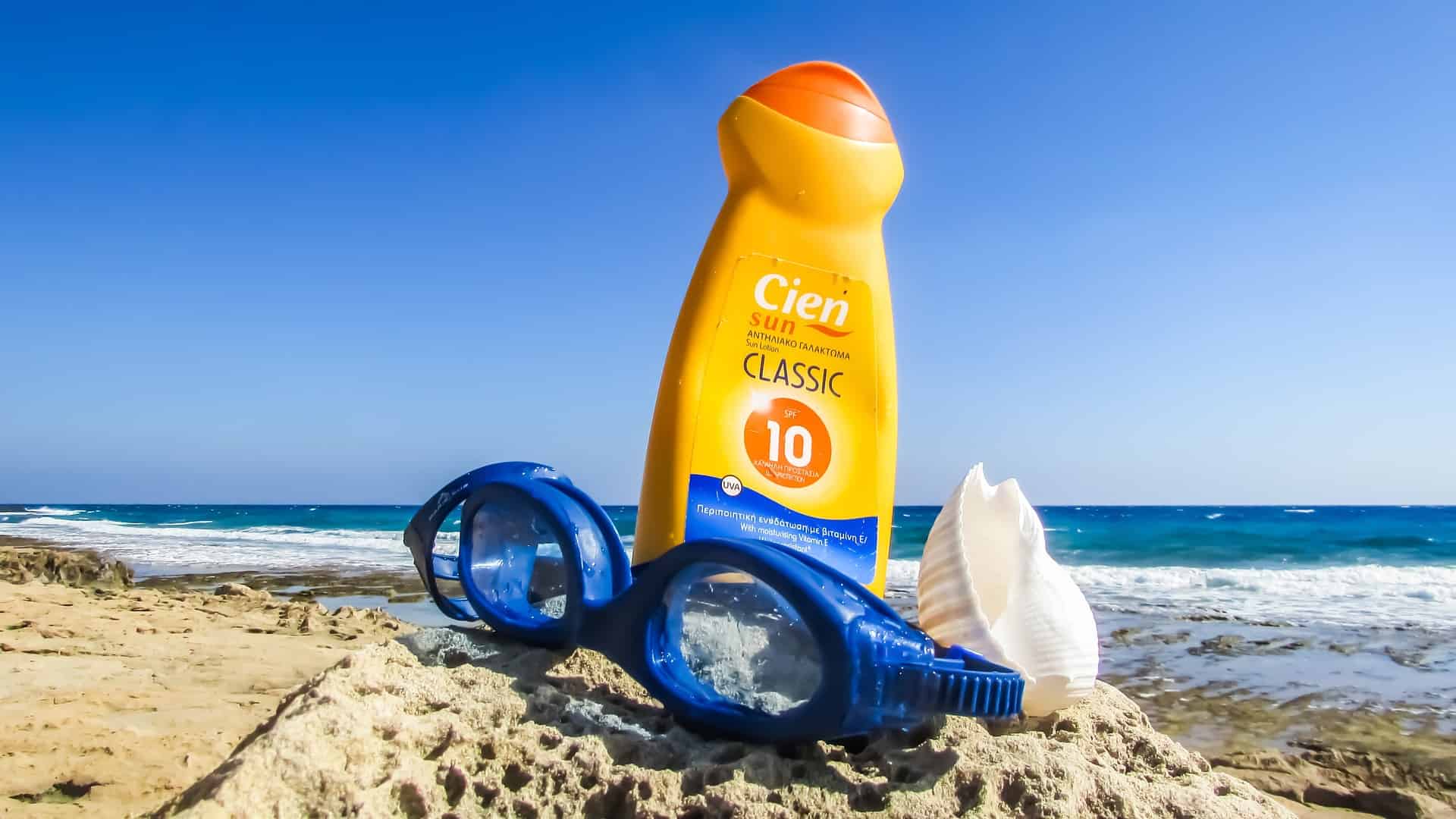
According to the Royal Pharmaceutical Society (RPS) in the UK, most Britons are unaware that the SPF rating label displayed on sunscreens does not offer full spectrum protection against damaging sunburns and cancer-causing UV wavelengths. Moreover, a quarter of the questioned participants had no idea what SPF means.
Companies aren’t helping either, further fueling confusion by releasing SPF 80 or SPF 100+ products, which trick bewildered consumers into thinking they’re wearing double or even triple protection when in fact the benefit is marginal at best.
With this in mind, the RPS suggests it’s now time to introduce a new sun protection rating system, one that covers both types of cancer-causing UV rays (A and B), which is less ambiguous.
Know your UV ABCs
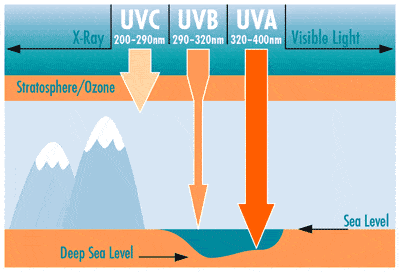
There are three main types of UV rays: UVA, UVB, and UVC.
UVA stands for Aging because it penetrates deep into the skin and is responsible for premature aging of the skin and skin cancer. Tanning beds can emit two to five times more UVA radiation than the sun.
UVB stands for Burning. It mainly affects the outer layers of the skin, causing sunburns, premature aging of the skin, and skin cancer.
UVC radiation is the strongest, most dangerous form of UV light. But you don’t have to worry about this latter class of ultraviolet rays since they’re all blocked by the planet’s atmosphere and never reach your skin.
According to the National Cancer Institute, the rate of new melanoma cases among American adults has tripled since the 1970s, from 7.89 per 100,000 population in 1975 to 22.7 in 2010. (NCI 2015). Of course, some of the increased incidence rates can be accounted to better diagnosis, but over-exposure to the sun and indoor tanning also definitely play a major role.
This is why most doctors stress very hard that you should wear sunscreens always when it’s clear you’ll be spending your day on the beach. The most vulnerable hours are those between 11 am and 4 pm.
Sunscreens are designed to protect the skin from UVA and UVB radiation, which as stated above can cause cancer. But the SPF rating – a label that determines the efficacy of a sunscreen product – indicates the level of protection against UVB rays.
According to the RPS survey which questioned 2,000 Britons, only 8% knew that the SPF rating refers to protection only from UVB rays. Most said either that they thought the SPF was an indication of levels of protection from both UVB and UVA (56%), or they did not know what the rating stood for (25%). There are of course sunscreens that protect against both UVA and UVB, but these are labeled differently.
How to read the SPF number on sunscreens
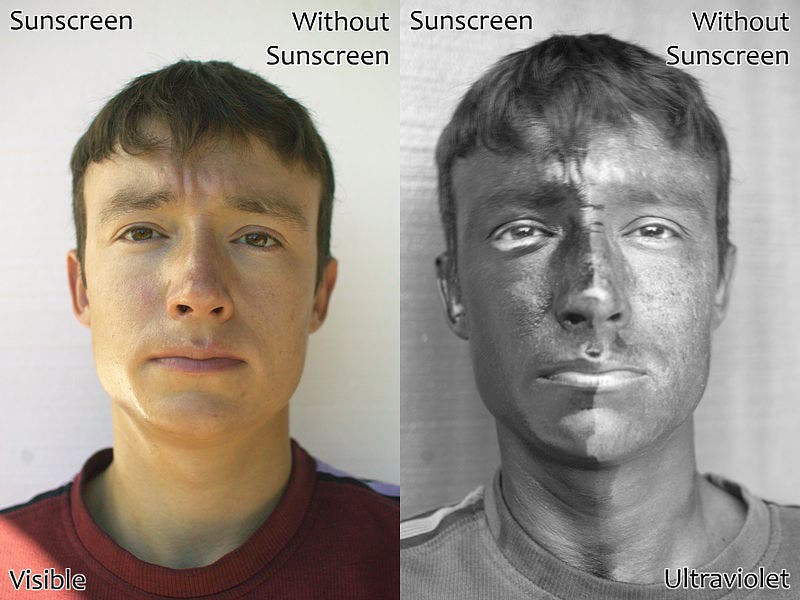
The SPF was introduced in the 1960s and for decades SPF 30 protection seemed like more than enough to prevent surface sunburns. Today, there are companies that sell sunscreens labeled SPF 50, 70, and even 100 which is kind of preposterous as we’ll learn soon.
Basically, these companies are taking advantage of the consumers’ ignorance and market products using emotional targeting (more SPF –> much more protection against the sun).
What SPF stands for on sunscreens
If you’ve always wondered what the heck SPF is in the first place, today’s your lucky day. Basically, the SPF rating indicates how many times weaker a person’s UV-B exposure will be once the sunscreen is applied. For instance, if it would take 15 minutes in the sun for your skin to get burned, wearing SPF 15 would take 15 times as much for your skin to get burned or three hours and 45 minutes. A sunscreen with an SPF 100 index means the same person would be protected for more than 24 hours.
The formula below explains how the SPF index works.
SPF INDEX x the time it takes to burn = time needed to receive the same dose of UV you had gotten otherwise
But the SPF is very misleading because wearing a higher index doesn’t mean the protection is better. For instance, a study found if sunscreens were applied appropriately, to prevent sunburn there would be no need for sun protection factors higher than 15. Moreover, numerical indicators of sun protection on sunscreen packaging can cause more confusion than clarity.
According to The Atlantic, for each minute wearing an SPF 30 sunscreen lotion, you get a 1/30th, or 3.33%, UV exposure that you’d get without the lotion. This means SPF 30 protects you from 97% of UVB rays. SPF 80 blocks another 1.75 percentage points of UVB radiation, while SPF 100 blocks 99 percent of UVB rays.
So the difference between SPF 30 and SPF 100 is only 2.3%. Thus the improvement is marginal, but confusingly enough this isn’t what you’d think when choosing lotions based on the SPF index.
“It captures the consumers’ attention, the high SPF,” said Dr. Elma D. Baron, an assistant professor of dermatology at Case Western Reserve University who sees patients at hospitals in Cleveland. “Just walking down the drugstore aisle and seeing a SPF 90 or 95, they assume, ‘This is what I need.’ ”
“As you get higher and higher, it’s not really a practical difference,” said Dr. David M. Pariser, the president of the American Academy of Dermatology.
The RPS proposes sunscreen manufacturers provide one easy-to-understand rating, based on a simple description of the total amount of sun protection offered: low, medium, high, and very high protection.
“People now have largely got the message that they must protect their skin from the sun using sunscreen, along with other precautions such as covering up and keeping out of the sun during the hottest part of the day.
“What the RPS is calling for now is one uniform measure for all sun protection products, so pharmacists can provide easy to understand advice on the effectiveness of products and how they should be used.”
The best way to protect against UV rays
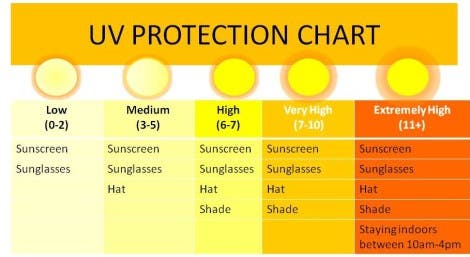
Despite the confusion, wearing sunscreen is actually a very good idea, but you need to make sure you’re properly applying it. Sun lotions can be really expensive, so a lot of people turn frugal and minimally apply sunscreen – bad idea!
When using sunscreen you need to apply all over your exposed skin. As a rule of thumb, apply a full shot glass of lotion on your body. This means that a typical three-ounce tube should last, at most, a few outings. Also, make sure your screen is also active against UVA. Look for ingredients like avobenzone that doesn’t degrade in light or Mexoryl SX.
But really, the single most important thing you can do to minimize the risks of UV exposure is to cover up. Photo-protective clothing is also now more widely available and has a UPF factor of 15 to 24 for good protection, 25 to 39 for very good protection, and 40 to 50 for excellent protection. Of course, that’s a bit overkill. You don’t necessarily need to wear UPF-rated clothing. The best clothing to wear is tightly woven and darker colored.

